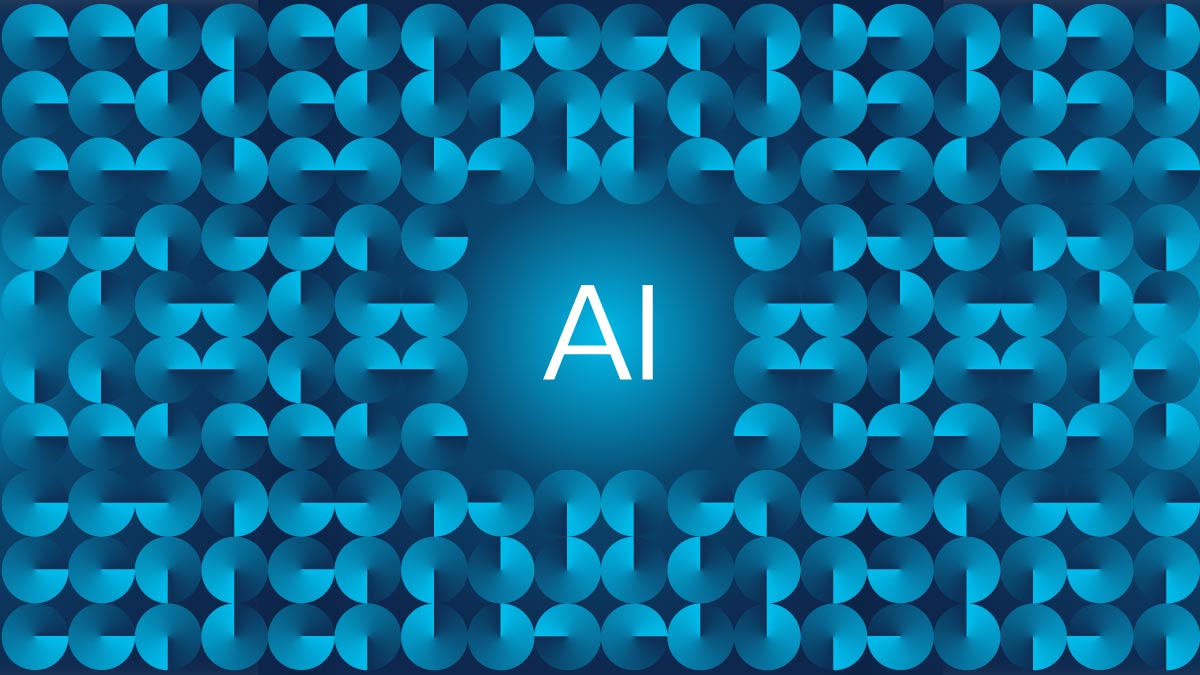ผลการศึกษาของซิสโก้ชี้ องค์กรในไทยเพียง 20% มีความพร้อมในการปรับใช้และใช้ประโยชน์จาก AI โดย 74% เป็นกังวลอย่างมากเกี่ยวกับผลกระทบต่อธุรกิจหากไม่เตรียมพร้อมในอีก 12 เดือนข้างหน้า
ประเด็นข่าว:
- องค์กรเกือบทั้งหมดในไทย (99%) ระบุว่าความจำเป็นเร่งด่วนในการปรับใช้เทคโนโลยีที่ขับเคลื่อนด้วย AI ได้เพิ่มสูงขึ้นช่วง 6 เดือนที่ผ่านมา
- มีช่องว่างที่สำคัญใน 6 เสาหลักของธุรกิจ ซึ่งได้แก่ กลยุทธ์ โครงสร้างพื้นฐาน ข้อมูล การกำกับดูแล บุคลากร และวัฒนธรรมองค์กร โดยบริษัท 80% กล่าวว่าพวกเขายังไม่พร้อมอย่างเต็มที่ในการบูรณาการ AI เข้ากับธุรกิจของตน
- บริษัทต่างๆ กำลังแข่งกับเวลา โดย 74% กล่าวว่าพวกเขามีเวลาสูงสุดแค่ “หนึ่งปี” ในการปรับใช้กลยุทธ์ AI มิฉะนั้นจะส่งผลเสียต่อธุรกิจ
มีเพียง 20% ขององค์กรในประเทศไทยเท่านั้นที่มีความพร้อมอย่างเต็มที่ในการปรับใช้และใช้ประโยชน์จากเทคโนโลยีที่ขับเคลื่อนด้วย AI ตามรายงานฉบับแรกเกี่ยวกับดัชนีความพร้อมด้าน AI (AI Readiness Index) ของซิสโก้ (NASDAQ: CSCO) ซึ่งได้ตีพิมพ์เผยแพร่ในวันนี้ ดัชนีดังกล่าวซึ่งเป็นการสำรวจข้อมูลจากบริษัททั่วโลกมากกว่า 8,000 แห่ง ที่ได้รับการพัฒนาเพื่อตอบสนองต่อการปรับใช้ AI อย่างรวดเร็ว ซึ่งนับเป็นการเปลี่ยนแปลงครั้งสำคัญที่ส่งผลกระทบต่อธุรกิจและชีวิตประจำวันในเกือบทุกแง่มุม รายงานดังกล่าวเน้นย้ำถึงความพร้อมของบริษัทต่างๆ ในการปรับใช้และใช้ประโยชน์จาก AI โดยแสดงให้เห็น “ช่องว่างที่สำคัญ” ในเสาหลักของธุรกิจและโครงสร้างพื้นฐานซึ่งจะก่อให้เกิดความเสี่ยงอย่างร้ายแรงในอนาคตอันใกล้นี้
ผลการศึกษาล่าสุดชี้ว่า ถึงแม้การปรับใช้ AI จะมีความคืบหน้าอย่างช้าๆ มานานหลายทศวรรษ แต่ความก้าวหน้าของเทคโนโลยี Generative AI ประกอบกับการเปิดให้ใช้งานอย่างกว้างขวางสำหรับผู้ใช้ทั่วไปในช่วงปีที่ผ่านมา ส่งผลให้มีความสนใจเพิ่มมากขึ้น รวมถึงความท้าทาย ความเปลี่ยนแปลง และความเป็นไปได้ใหม่ๆ ที่เกิดจากเทคโนโลยีนี้ ขณะที่ 63% ของผู้ตอบแบบสอบถามเชื่อว่า AI จะมีผลกระทบอย่างมากต่อการดำเนินธุรกิจของพวกเขา และอาจก่อให้เกิดประเด็นใหม่ๆ เกี่ยวกับความเป็นส่วนตัวของข้อมูลและความปลอดภัย รายงานดัชนีดังกล่าวพบว่า บริษัทต่างๆ เผชิญกับความท้าทายมากที่สุดเมื่อใช้ประโยชน์จาก AI ควบคู่ไปกับข้อมูลของพวกเขา ที่จริงแล้ว ผู้ตอบแบบสอบถาม 75% ยอมรับว่าสาเหตุเป็นเพราะข้อมูลถูกจัดเก็บอย่างกระจัดกระจายไว้ในระบบต่างๆ ทั่วทั้งองค์กร
อย่างไรก็ตาม ข่าวดีก็คือ รายงานดัชนีดังกล่าวเปิดเผยว่า บริษัทต่างๆ ในไทยกำลังใช้มาตรการเชิงรุกในหลายๆ ด้านเพื่อเตรียมพร้อมสำหรับอนาคตที่มุ่งเน้น AI เป็นหลัก เมื่อพูดถึงการกำหนดกลยุทธ์ด้าน AI องค์กร 97% มีกลยุทธ์ด้าน AI ที่แข็งแกร่งอยู่แล้วหรืออยู่ระหว่างการพัฒนา องค์กรมากกว่า 8 ใน 10 (81%) ถูกจัดอยู่ในกลุ่ม Pacesetters (มีความพร้อมอย่างเต็มที่) หรือ Chasers (มีความพร้อมปานกลาง) โดยมีเพียง 1% เท่านั้นที่จัดอยู่ในกลุ่ม Laggards (ไม่ได้เตรียมพร้อม) ซึ่งนับเป็นการบ่งบอกว่าผู้บริหารระดับสูงและผู้บริหารฝ่ายไอทีให้ความสำคัญกับเรื่องนี้เป็นอย่างมาก ดังจะเห็นได้จากข้อเท็จจริงที่ว่าผู้ตอบแบบสอบถามเกือบทุกคน (99%) กล่าวว่าความจำเป็นเร่งด่วนในการปรับใช้เทคโนโลยี AI ในองค์กรของพวกเขาเพิ่มสูงขึ้นในช่วง 6 เดือนที่ผ่านมา โดยมีการรายงานว่า ‘โครงสร้างพื้นฐานด้านไอทีและการรักษาความปลอดภัยทางไซเบอร์’ เป็นส่วนที่สำคัญที่สุดในการปรับใช้ AI
ลิซ เซนโทนี่ รองประธานบริหารและผู้จัดการทั่วไปฝ่ายแอปพลิเคชั่น และประธานเจ้าหน้าที่ฝ่ายกลยุทธ์ของซิสโก้ กล่าวว่า “ขณะที่บริษัทต่างๆ เร่งการปรับใช้โซลูชั่น AI ก็จะต้องมีการประเมินว่าควรจะลงทุนในส่วนใดบ้างเพื่อให้แน่ใจว่าโครงสร้างพื้นฐานของพวกเขาจะสามารถรองรับความต้องการของเวิร์กโหลด AI ได้ดีที่สุด นอกจากนี้ องค์กรยังต้องสามารถตรวจสอบว่า AI ถูกใช้งานอย่างไร เพื่อให้แน่ใจเกี่ยวกับ ROI, ความปลอดภัย โดยเฉพาะอย่างยิ่ง ‘ความรับผิดชอบ’ ”
ข้อมูลสำคัญที่พบในผลการศึกษา
ผลการศึกษาพบว่า โดยรวมแล้วมีบริษัทเพียง 20% เท่านั้นที่จัดอยู่ในกลุ่ม Pacesetters (มีความพร้อมอย่างเต็มที่) โดยที่ 36% ของบริษัทในไทยจัดอยู่ในกลุ่ม Laggards (ไม่ได้เตรียมพร้อม) ที่ 1% และกลุ่ม Followers (มีความพร้อมอย่างจำกัด) ที่ 35% นอกจากนี้ ยังพบข้อมูลที่สำคัญที่สุดได้แก่:
- ความเร่งด่วน: สูงสุด “หนึ่งปี” ก่อนที่บริษัทต่างๆ จะเริ่มเห็นผลกระทบเชิงลบต่อธุรกิจ โดย 74% ของผู้ตอบแบบสอบถามในไทยเชื่อว่าพวกเขามีเวลาสูงสุดไม่เกินหนึ่งปีในการปรับใช้กลยุทธ์ AI ก่อนที่องค์กรของพวกเขาจะเริ่มได้รับผลกระทบเชิงลบอย่างมีนัยสำคัญต่อธุรกิจ
- กลยุทธ์ : ขั้นตอนแรกคือการกำหนดกลยุทธ์ และองค์กรต่างๆ ดำเนินการได้ด้วยดี โดย 81% ขององค์กรในไทยจัดอยู่ในกลุ่ม Pacesetters หรือ Chasers โดยมีเพียง 1% เท่านั้นที่จัดอยู่ในกลุ่ม Laggards นอกจากนี้ 97% ขององค์กรมีกลยุทธ์ AI ที่ชัดเจนอยู่แล้วหรืออยู่ระหว่างการพัฒนา ซึ่งนับเป็นสัญญาณเชิงบวก แต่ก็ยังมีสิ่งที่ต้องทำอีกมาก
- โครงสร้างพื้นฐาน: เครือข่ายยังไม่มีความพร้อมที่จะรองรับเวิร์กโหลด AI โดย 95% ขององค์กรธุรกิจทั่วโลกตระหนักดีว่า AI จะก่อให้เกิดเวิร์กโหลดเพิ่มมากขึ้นต่อโครงสร้างพื้นฐาน แต่ในประเทศไทย มีองค์กรเพียง 29% เท่านั้นที่มองว่าโครงสร้างพื้นฐานของตนสามารถปรับขนาดได้อย่างยืดหยุ่น ผู้ตอบแบบสอบถามส่วนใหญ่ (56%) ระบุว่าพวกเขามีความสามารถในการปรับขนาดอย่างจำกัด หรือไม่มีเลยเมื่อต้องรับมือกับปัญหาหรือความท้าทายด้าน AI ใหม่ๆ ภายในโครงสร้างพื้นฐานด้านไอทีที่มีอยู่ในปัจจุบัน นอกจากนี้ เพื่อรองรับความต้องการด้านพลังงานและการประมวลผลที่เพิ่มสูงขึ้นของ AI บริษัทมากกว่าสองในสาม (71%) จะต้องใช้หน่วยประมวลผลกราฟิก (GPU) สำหรับดาต้าเซ็นเตอร์มากขึ้น เพื่อรองรับเวิร์กโหลด AI ในอนาคต
- ข้อมูล: องค์กรไม่สามารถละเลยความสำคัญของการมี ‘ข้อมูลที่พร้อมสำหรับ AI’ แม้ว่าข้อมูลจะทำหน้าที่เป็นแกนหลักที่สำคัญสำหรับการดำเนินการของ AI แต่กลับเป็นส่วนที่มีความพร้อมน้อยที่สุด โดยมีจำนวน Laggards มากที่สุด (10%) เมื่อเทียบกับเสาหลักอื่นๆ ทั้งนี้ 75% ของผู้ตอบแบบสอบถามทั้งหมดระบุว่า ข้อมูลต่างๆ ถูกแยกส่วนหรือกระจัดกระจายอยู่ในองค์กรของตน ซึ่งจะก่อให้เกิดปัญหาท้าทายที่สำคัญ เพราะความยุ่งยากซับซ้อนในการบูรณาการข้อมูลที่อยู่ในระบบต่างๆ และการทำให้ข้อมูลดังกล่าวพร้อมใช้งานสำหรับแอปพลิเคชัน AI สามารถส่งผลกระทบต่อความสามารถในการใช้ประโยชน์จากแอปพลิเคชันเหล่านี้
- บุคลากร: ความต้องการทักษะด้าน AI เผยให้เห็นถึงช่องว่างหรือความเหลื่อมล้ำทางดิจิทัลในยุคใหม่ คณะกรรมการ (93%) และผู้บริหาร (91%) มีแนวโน้มที่จะยอมรับการเปลี่ยนแปลงที่เกิดจาก AI มากที่สุด โดยมีการตอบรับในระดับสูงหรือปานกลาง อย่างไรก็ตาม ยังมีงานที่ต้องทำอีกมากเพื่อดึงดูดผู้บริหารระดับกลาง โดย 19% ยอมรับ AI อย่างมีข้อจำกัดหรือไม่ยอมรับเลย และในส่วนของพนักงาน องค์กรเกือบหนึ่งในห้า (22%) รายงานว่าพนักงานไม่ค่อยเต็มใจที่จะปรับใช้ AI หรือต่อต้านการใช้ AI ความต้องการทักษะด้าน AI เผยถึงช่องว่างทางดิจิทัลยุคใหม่ ผู้ตอบแบบสอบถาม 95% กล่าวว่าพวกเขาได้ลงทุนเพื่อยกระดับทักษะของพนักงานที่มีอยู่ ขณะที่ 10% เห็นถึงความเหลื่อมล้ำด้าน AI ที่กำลังเกิดขึ้น โดยตั้งข้อสงสัยว่าจะมีบุคลากรเพียงพอต่อการยกระดับทักษะหรือไม่
- การกำกับดูแล: การปรับใช้นโยบาย AI เริ่มต้นช้า 57% ขององค์กรไม่มีนโยบาย AI ที่ครอบคลุม ซึ่งนับเป็นปัญหาที่ต้องได้รับการแก้ไข ขณะที่บริษัทต่างๆ พิจารณาและกำกับดูแลปัจจัยทั้งหมดที่ทำให้เกิดความเสี่ยงต่อการทำลายความเชื่อมั่นและความไว้วางใจ ปัจจัยที่ว่านี้ได้แก่ ความเป็นส่วนตัวของข้อมูล อธิปไตยด้านข้อมูล หรือสิทธิของการเป็นเจ้าของข้อมูล (Data Sovereignty) และความเข้าใจต่อการปฏิบัติตามกฎระเบียบโลก นอกจากนั้น จะต้องให้ความสนใจอย่างใกล้ชิดเกี่ยวกับแนวคิดเรื่องอคติ ความยุติธรรม และความโปร่งใส ทั้งในส่วนของข้อมูลและอัลกอริธึม
- วัฒนธรรมองค์กร: มีการเตรียมการน้อยมาก แต่มีแรงจูงใจสูงในการให้ความสำคัญเป็นอันดับต้นๆ เสาหลักนี้มีจำนวน Pacesetters ต่ำที่สุด (13%) เมื่อเทียบกับหมวดหมู่อื่นๆ โดยส่วนใหญ่ได้รับแรงหนุนจากข้อเท็จจริงที่ว่า 3.4% ของบริษัทยังไม่ได้จัดทำแผนการจัดการการเปลี่ยนแปลง (Change Management Plans) และสำหรับบริษัทที่ทำแผนไว้แล้ว 76% ยังคงอยู่ระหว่างดำเนินการ ผู้บริหารระดับสูงเปิดรับการเปลี่ยนแปลงด้าน AI ภายในองค์กรมากที่สุด และจะต้องเป็นผู้นำในการจัดทำแผนงานที่ครอบคลุมและมีการสื่อสารอย่างชัดเจนไปยังผู้บริหารระดับกลางและพนักงานที่มีอัตราการยอมรับ AI ค่อนข้างต่ำ ข่าวดีก็คือ พนักงานมีแรงจูงใจอยู่ในระดับสูง โดยมากกว่า 8 ใน 10 (81%) กล่าวว่าองค์กรของพวกเขากำลังเปิดรับ AI โดยมีความเร่งด่วนในระดับปานกลางถึงระดับสูง
ดัชนีความพร้อมด้าน AI ของซิสโก้
ดัชนีความพร้อมด้าน AI ของซิสโก้ (Cisco AI Readiness Index) อ้างอิงการสำรวจความคิดเห็นแบบปกปิดสองทาง (Double Blind) สำหรับผู้บริหารฝ่ายธุรกิจและฝ่ายไอทีภาคเอกชนจำนวน 8,161 คนใน 30 ประเทศ ซึ่งดำเนินการโดยหน่วยงานอิสระ และเป็นการสอบถามความเห็นของผู้ตอบแบบสอบถามจากบริษัทที่มีพนักงาน 500 คนขึ้นไป ดัชนีดังกล่าวประเมินความพร้อมด้าน AI ของผู้ตอบแบบสอบถาม ใน 6 เสาหลักที่สำคัญ ได้แก่ กลยุทธ์ โครงสร้างพื้นฐาน ข้อมูล บุคลากร การกำกับดูแล และวัฒนธรรมองค์กร
บริษัทต่างๆ ได้รับการตรวจสอบโดยใช้เกณฑ์ชี้วัดที่แตกต่างกัน 49 รายการ ครอบคลุมเสาหลักทั้งหก เพื่อกำหนดคะแนนความพร้อมสำหรับแต่ละด้าน รวมถึงคะแนนความพร้อมโดยรวมสำหรับองค์กรของผู้ตอบแบบสอบถาม ตัวบ่งชี้แต่ละรายการได้รับการถ่วงน้ำหนักตามความสำคัญสำหรับความพร้อมในส่วนของเสาหลักที่เกี่ยวข้อง และจากคะแนนโดยรวม ซิสโก้ได้จำแนกองค์กรเป็น 4 กลุ่มตามระดับความพร้อมที่แตกต่างกัน ได้แก่ Pacesetters (มีความพร้อมอย่างเต็มที่), Chasers (มีความพร้อมปานกลาง), Followers (มีความพร้อมอย่างจำกัด) และ Laggards (ไม่ได้เตรียมพร้อม)
